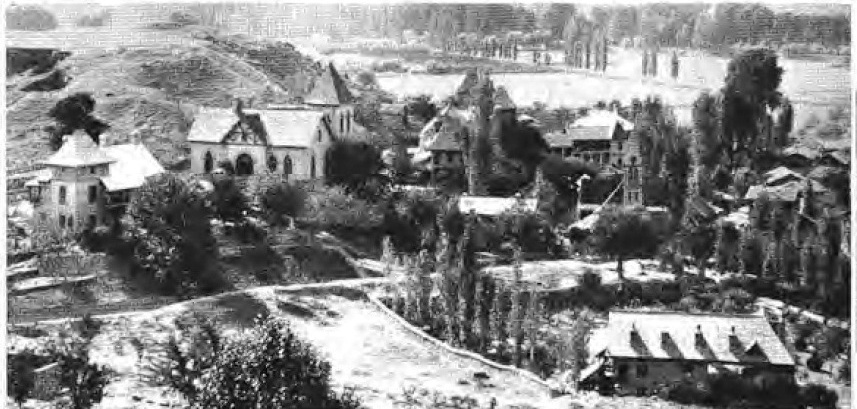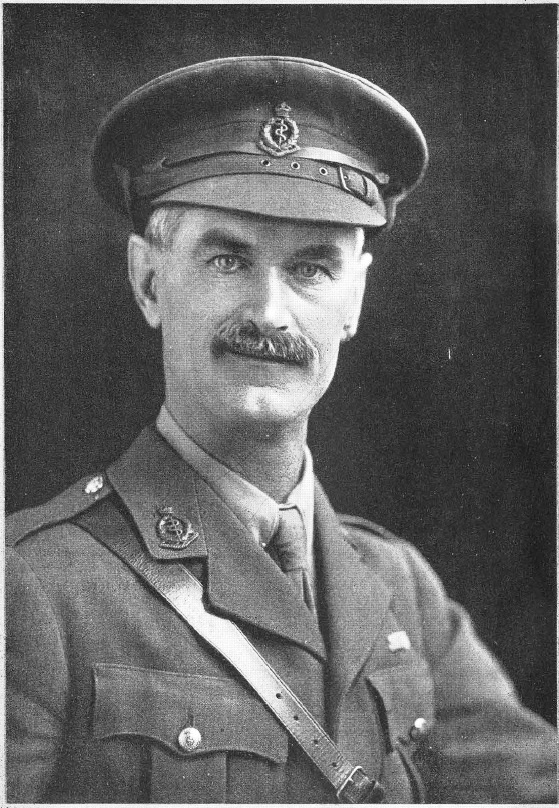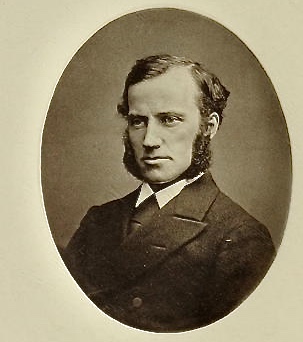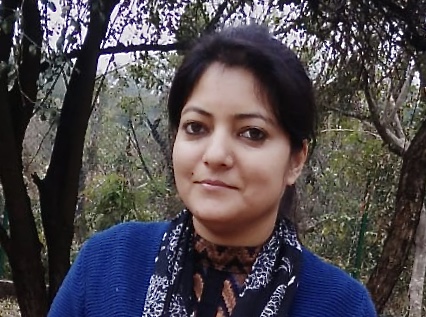Unlike many other epidemics, the Cholera has been Kashmir’s resident killer for most of the nineteenth century when the bacteria would come with the durbar move and use the native superstition to spread and kill. In this write-up, scholar Dr Anita D Rana offers a detailed account of the recurrence of the epidemic and its management

The Mission Hospital in Srinagar. A photograph taken early twentieth century
It was known as Waba in Kashmir (see Walter Lawrence, The Valley of Kashmir, p 218). Cholera was not new to the State when it occurred here in the nineteenth century. For the first time, cholera was reported to have occurred in Kashmir in 1598. (Lawrence, p 218) Walter Lawrence did not rule out the possibility of its earlier occurrence and his opinion was that cholera might have existed earlier than this but possibly the nomenclature of the disease might be different. Modern historian Anil Kumar opined that as no rituals were associated with cholera as in case of smallpox, so he concluded that the disease was unknown to Indians before the British arrival (Anil Kumar, Medicine and the Raj: British Medical Policy in India 1835-1911 p 172).
In nineteenth-century cholera epidemic occurred about ten times in the State i.e. in 1824, 1844, 1852, 1858, 1867, 1872, 1875-76, 1879, 1888, and in 1892. It was more prevalent in Kashmir region than in Jammu. Also, it was more virulent and destructive in Kashmir. Although the conditions of Kashmir were such that the germs of cholera could not germinate here but could flourish well if anyhow got a chance to enter.
The Imported Epidemic
In the latter half of nineteenth-century cholera became more rampant in the State. This was because of the opening of means of communication in the State by which travelling activities were fastened in the State. Through the Jhelum Valley Road, it became easier for people as well as cholera to travel in the State and so its epidemics became more frequent (Ernest F Neve, Beyond The Pir Panjal, p 80).

Dr Arthur Neve, Kashmir’s most popular doctor who died of Spanish Flu while being infected in France. He is buried in Sheikhbagh Srinagar.
In the dispersion of the cholera epidemic, the religious pilgrimages were held highly responsible. The well-reputed pilgrimage centre, Amarnath cave, Harmukh cave (Lawrence, p 299), and Haridwar Kumbh Mela were the places from where the infection was said to have spread at various occasions. At both times in 1867 and in 1879, which were the years for Kumbh Mela in Haridwar, the infection was brought by pilgrimages. About the pestilence of cholera in 1867, Dr Elmslie wrote, “It appears that some sepoys who had got leave to go and wash in the Ganges at Hardwar, had returned to their regiment at Srinagar, and brought the seeds of cholera with them (William Jackson Elmslie, Etiology of Epithelioma Among Kashmiris p 195).”
There is a debate on pilgrimage theory of disease dissemination. This was directly linked to discourage religious activities and encourage proselytisation motive of Christian missions. Though this fact cannot be negated yet the fact that congregations always disseminated diseases too could not be ignored. The epidemic of cholera in 1900 was said to have occurred because of Amaranth pilgrimage. The famous Mohammedan fair of Kashmir became the dispersion ground for cholera epidemic at various times. In 1889 in Kashmir immediately after one week of this fair cholera broke out in Kashmir (Ernest F Neve, Beyond the Pir Panjal, p 53). It was a popular belief of people in Kashmir that the disease of cholera could be averted if the tank of Makhdum Sahib remained filled with water. Whenever the epidemic broke out in any part of the region people flocked in huge numbers to fill the tank with water. The water was sometimes brought from the pilgrims of infected villages and this water was used by all pilgrims as a preservative from cholera (Neve, p 80).
In these religious congregations, pilgrims from far and wide regions came to pay homage and germs and infections were also brought and dispersed by these Melas and pilgrimages. Thus beliefs and superstitions aggravated the scourge of epidemics.
An Extension of Punjab
Out of the ten epidemics of cholera observed in the state in nineteenth-century the last epidemic of 1892 was devastating of all the epidemics in the State. Earlier epidemics could be equally devastating but due to unavailability of vital statistics, the destruction caused by these epidemics could not be known. By a comparative study of virulence of cholera in Punjab and Kashmir, it was found that between the years 1867 and 1890 cholera occurred five times in the State in 1867, 1872, 1875, 1879 and last in 1888 whereas the same epidemic appeared 12 times in Punjab during the same time period with a total loss of 136 372 lives.
At that time natives of the state were not educated in western medicine and so doctors of western medicine were imported from outside, reached a conclusion that the State lies outside the natural endemic zone of cholera. Kashmir region became affected by cholera if germs anyhow got entry from outside and got favourable conditions for multiplication and growth and their spread until they die a natural death by destructive forces of nature. All the epidemics of cholera in the State were imported from Punjab.
The cholera of 1892 which was most devastating among all was also imported from Punjab along with Gilgit Transport. The first case reached on 24th April 1892, when a man suffering from cholera died at Domel. The total number of deaths occurred both in Srinagar city and in Moffussil towns of Kashmir by this cholera was 11712. This cholera was described as most destructive of all the cholera epidemics in Kashmir. As Ernest Neve reported that the Srinagar known as the city of the sun became “City of Dreadful Deaths” in this cholera epidemic (Neve, p 81). It became difficult to dispose of the dead bodies and no one left to take care of the remaining members of the family in this epidemic. This epidemic of cholera was a turning point in the medical history of Kashmir. After this epidemic people, as well as Government, made up their mind to eradicate cholera from the region and took required steps. Greater emphasis was laid on cleaning the city and Moffussil towns.
During the twentieth-century cholera epidemic appeared a number of times in the State but these were less deadly than the epidemics of the previous century as various preventive and precautionary measures had been introduced by this time. However, epidemics of cholera had been observed three times in 1900, 1907and 1910 during the first decade of the twentieth century. In 1910 epidemic of cholera occurred in Kashmir province and 18000 cases of this disease were reported. Another epidemic of cholera appeared after four years in 1914. This epidemic started in June and continued up to December. The starting point for this disease was top of the valley.
The Domel Side
Another epidemic appeared in 1915 which had its starting point at Muzzafarabad. About 3000 cases occurred in about eight months (Neve, p 81). Starting from the top of the valet the epidemic again reappeared in August 1917 and continued up to Jan 1918. The cases reported in this epidemic were about 600 (File No 138, Political Department, 1935, State Archives Repository Jammu, p 4).
Again epidemics of cholera were reported to have occurred in 1918, 1919, 1924, 1929, 1930 and 1935 with 116, 19000, 21000, 200, 500 and 3637 cases respectively (File No 138, p 5).
In order to control the disease, the Government started mass inoculations. The protection afforded by inoculation proved satisfactory. However, inoculation did not prove beneficial in the already infected person and such people could not escape from developing the disease (File No 138, p 9.) But the less immunity period for inoculation i.e. about six months was primarily responsible for reappearance of the disease again and again in the State (File No 138, p 9). In Srinagar city epidemic of cholera was again observed on 7th Sept. 1941 (File No M-93/NM, 1941, SARJ, p 45).
Managing Srinagar
To control this epidemic the city was divided into two divisions one above Fateh Kadal (3rd bridge on river Jhelum) and another below this. Each division was placed under the supervision of an Assistant Surgeon. Various steps were taken by the administration to check further spread of disease like disinfection of houses and city, inoculating people and appointment of temporary sanitary inspecting staff (File No M-93/NM, 1941)
Practitioners of indigenous as well as western medicine both differed in their approach and practice towards cholera treatment. Native Hakim relied on eliminative theory while doctors of western medicine laid stress on stopping the dejections. It was a popular belief among native curers that stopping of wastes eliminating from the body would lock up the poison of cholera in the body. They thus administered irritant purgatives to the patients bringing them to fatal State (Neve, p 59-60).
The malpractice of venesection was also prevalent among the native practitioners. In this method, the patient was allowed to bleed by cutting one of his veins. The humoral theory of disease explains that any disease is caused because of imbalance of fluids in the body and by letting blood out of the body this imbalance could be restored. This method was considered vague as in view of modern methods of treatment and this always proved fatal. It was in 1872 that Maharaja Ranbir Singh banned venesection by means of Government order passed in Kashmir (C E Bates, A Gazetteer of Kashmir, p 17). For the treatment of cholera, Hakims used a pendiluvium of leaves of willow (Salix alba) and another herb kot (Ancklandia costus) was also sometimes prescribed (Bates, p 41). The western doctors though gave a number of drugs depending upon the stage of the disease like Chlorodyne, Murrays pills, Cotter’s pills, Salol, injections of Morphine and Atrophia, yet no effective remedy against cholera was established (Bates, p 64-65).
Preventive Measures
The epidemic of cholera had shaken the administration and had also provoked administrative concerns of the State by the economic loss inflicted on the State. Every year a huge sum of money was spent on the prevention of the disease. Cholera was inflicting a crushing blow to the prestige of the Government as people were dying in large numbers and this could threaten the existence of the Government. This enforced the Government to take concrete steps, frame a definite policy and adopt preventive measures in order to bring cholera under check.
Improving Sanitary
According to Lawrence the view of the authorities on cholera in Kashmir was that the sanitary conditions in the Kashmir must be changed lest cholera could become endemic to the Srinagar where it was most common (Lawrence, p 219). Though sanitary conditions were held responsible for epidemics in Kashmir, yet the absence of disease for some years and its occurrence for other years without a change in sanitation could not be explained merely by sticking to sanitation theory. Say for example cholera occurred in the year 1824 and next epidemic which succeeded it was in 1844 that is after a gap of twenty years. No sanitary measures had been adopted in these twenty years. Similarly, cholera occurred in 1858 and was followed by the successive epidemic in 1867, another epidemic was in 1879 and the next epidemic after it occurred after nine years.

William Jackson Elmslie, the missionary who was is the founder of vaccination in Kashmir
Though sanitary conditions remained constant yet cholera did not appear for many years. Similarly, the sanitary conditions of Kashmir improved a lot after the sanitary measures taken after the establishment of municipalities in 1885, yet the cholera was not eradicated from the Kashmir valley up to 1940s. This made it crystal clear that besides sanitation some other factors were also responsible for cholera in Kashmir.
Sanitary conditions only acted as a spark for disease and added to casualties. The epidemics of cholera taught an important lesson of sanitation to the people of the State that the disease could not be cured yet it could be prevented, by improving the sanitary conditions of the towns and cities. More emphasis was laid on preventive medicine and sanitation after the epidemic of 1892. The sanitary conditions of the city improved a lot in the wake of cholera epidemics.
Quarantine Systems
Whenever the cholera epidemic broke out State Government observed quarantine laws so that cholera could not enter the State. The first and foremost step taken by Government in case of outbreak of any epidemic was opening of inspection posts at the places of entry in the State. The officials posted at these posts became strict in observance and did not let any passenger move freely without check-ups. The posts at Kohala, Banihal, Domel, Baramullah, Uri etc. observed strict rules on the entry of a foreign visitor. During the epidemic of 1875, quarantine was established at Kohala bridge. All traffic on the road was closed and 1385 persons were detained at Kohala post for eight days (Annual Administration Report, 1892-93, SARJ, p 52). But in spite of this, cholera appeared in Murree (Annual Administration Report, 1892-93 p 57). During the cholera epidemic of 1892-93 all persons were to be examined by a Hospital Assistant at inspecting posts. Those who suffered from any bowel complaints were detained at a temporary hospital till they were treated (Annual Administration Report, 1892-93, p 55).
Sanitary cordons were constructed around the infected areas so that the free movement of people could be discouraged and the disease could be restricted from spreading to other areas. In order to prevent the spread of cholera outside Kashmir and to the province of Jammu, a post of observation was opened at the beginning of the epidemic and was maintained throughout the epidemic at Banihal pass. Baramullah and Uri also observed similar posts.
However, Dr Mitra, CMO of Kashmir, in his report on cholera in Kashmir was against imposition of such laws in the State. He considered them hindrances to trade and caused inconvenience to the free movement of the people. Quarantines also led to oppression of people by corrupt officials (Annual Administration Report 1892-93, SARJ, p 59). The resentment for quarantines and sanitary cordons could be observed in the people of Kashmir also.
Clean Water
CE Bates, Dr Mitra, Dr Neves and various others confirmed that the habit of drinking unclean water by people was responsible for quick dissemination of infection and high casualties in cholera. After the visit of Colonel Harvey in the epidemic of 1892, he also confirmed the same and laid stress on improving water supply. He observed that the drainage system was of the crude type and the entire waste was drained into rivulets, nallahas, lakes etc. through the drains. This water was used indiscriminately for drinking and washing purposes. As the infection of cholera entered the body through the digestive tract so Dr Mitra stressed the purity of entrants through the mouth and especially of milk and water. After the outbreak of epidemics, the supply of piped water was initiated by the Government in various regions of the State.
Others Arrangements

Anita D Rana
In the case of epidemics, special staff of temporary doctors were appointed to assist the medical department in an hour of need. Sometimes due to non-availability of doctors, native Hakims were engaged by the Government with the required instructions and medicines given to them by the Government. In the cholera epidemic of 1892 Dr Mitra himself trained native Hakim to fight the cases of the epidcholeremic (Dr A Mitra, Dr Cholera, The Lancet, 1892, p 63).
Larger cities were divided into smaller parts and put under the charge of medical officials. Native doctors and Hakim were appointed to visit the patients at their respective places. One medical assistant was kept in constant attendance in each police station (Annual Administration Report 1892-93, SARJ, p 63). Special hospitals known as cholera hospitals were opened which could answer to the need for accommodation of more number of patients in case of an epidemic situation.
(After securing a gold medal for her masters in history, the author did her PhD from the Jammu University in 2017. The passages were excerpted from her doctoral thesis State Policy and Development of Health Services in Jammu and Kashmir, 1856-1947. She is a teacher.)
from Kashmir Life https://ift.tt/2B6xYyW
via IFTTThttps://kashmirlife.net
No comments:
Post a Comment